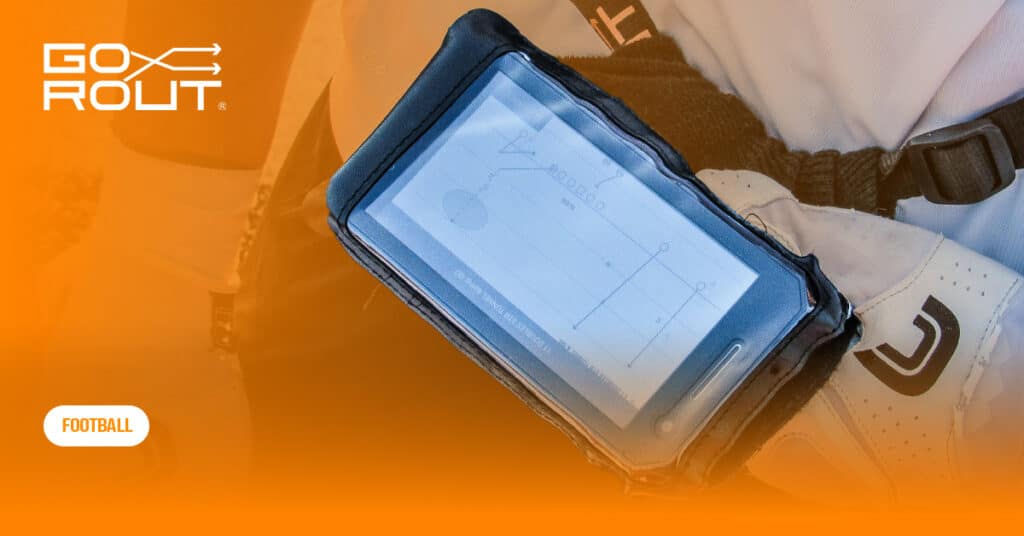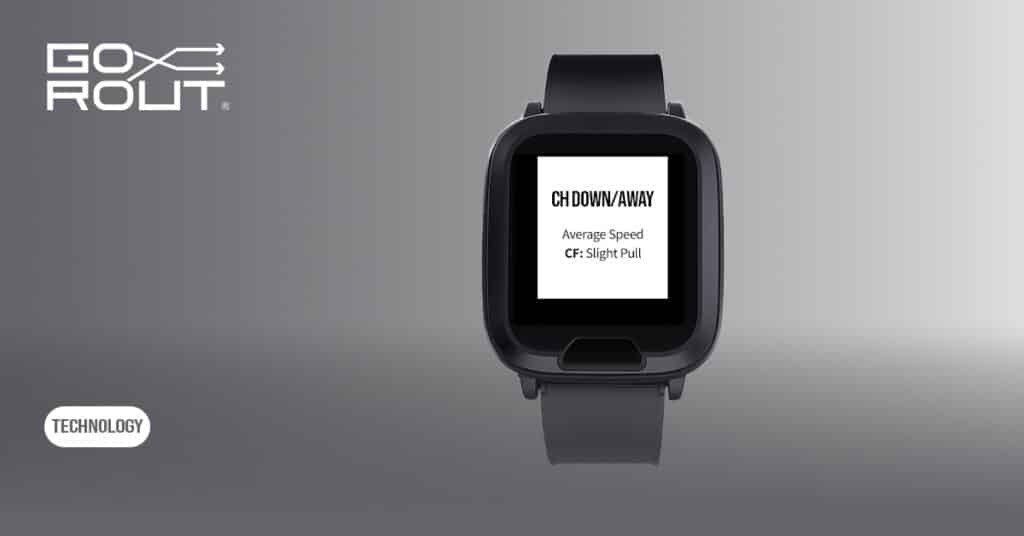Football Screen Plays: Top Examples in 2025
Reading Time: 10 minutes
Reading Time: 10 minutes
Coaches constantly face the task of designing plays that make the most of their most athletic receivers abilities to force defenders into one-on-one, open field matchups.
Creative screen plays offer them the best opportunity to do just that.
In this article, we will explain what football screen plays are and how you can use them to improve your team’s results.
We will also discuss how you can employ technology like the GoRout football practice system to create effective play calls, share them with your players on the field, double your reps, and prepare the team for the game day.
In addition, we will also share a free playbook template you can download and use for inspiration for designing other plays.
So, let’s get started and discover how effective screen plays can take your team to the next level.
The Evolution of Football Screen Plays
Football screen plays have evolved from simple passing plays into intricate strategies with dynamic formations, precise timing and strategic misdirection to outmaneuver opposing defenses.
Historical context: origins and early uses
The screen pass, invented in 1906 by Bob Zuppke, gained popularity and recognition in the 1930s and 1940s.
Notre Dame’s “Quadruple Screen” in the 1930s was coach Knute Rockne’s innovative offensive player scheme involving multiple screen passes designed to confuse and outmaneuver opposing defenses.
Quarterback Sid Luckman and the Chicago Bears incorporated the screen pass into their championship-winning offensive strategy in the 1940s.
Technological advancements influencing screen play strategies
Technological advancements like video analysis, wearable technology, and communication systems provide coaches and players with tools and football equipment to enhance execution, analysis and innovation in their screen play strategies.
Advanced video analysis software breaks down game footage and identifies trends in opponents’ defensive schemes so teams can develop screen plays tailored to exploit specific weaknesses in opposing defenses.
Wearable technology, as one of the new trends in sports, provides real-time data on player movements, speed and fatigue levels to create a screen game that optimizes player positioning and timing.
Advanced communication systems like GoRout allow coaches to relay play calls and adjustments to players quickly and efficiently.
Current trends in football screen plays
Incorporating screen plays into Run-Pass Option (RPO) concepts enables the quarterback to choose whether to hand off to a running back, keep the ball and run, or throw a screen pass based on the defensive alignment.
Teams frequently use pre-snap motion to create mismatches and confusion in the defense, setting up a screen game by motioning a receiver or running back into position to receive the pass.
Coaches continue to form creative play designs and variations of traditional screen plays and multi-level screens.
Anatomy of an Effective Football Screen Play

A screen play requires the offense to strategically align in a formation that disguises the screen while creating advantageous matchups.
Key components of a successful screen play
A successful screen play relies on each position having strategic formation, precise timing, effective blocking, accurate ball placement and the greatest possible yardage to deceive the defense and maximize efficiency.
Quarterback’s role
The quarterback makes pre-snap decisions and assures accurate ball placement and effective execution of a screen pass.
They must sell the play-action fake or quickly read the defense to determine if the screen pass is viable, then deliver the ball accurately to the intended receiver.
The QB must possess awareness to adjust timing and live ball placement based on the defensive pressure if the initial screen option fails.
Offensive line responsibilities
Offensive linemen must have precise timing in transitioning from pass setting to engaging their blocks to convince the defensive line to move upfield in their pass rush.
To navigate in open spaces, offensive linemen must exhibit exceptional agility and spatial awareness. They approach their landmarks at optimal angles without overrunning their blocking assignments.
Receivers’ routes and positioning
The primary receiver – typically a running back or slot receiver – will start by motioning toward the quarterback or lining up in the backfield. They will then slip behind the offensive linemen or take a step forward or backwards to create separation from the defenders.
Other receivers run decoy routes to draw defenders away from the primary receiver or block downfield to clear a path. The receivers create space and angles for the QB to make a quick, accurate pass to the primary ball receiver.
Running back responsibilities, routes and positioning
The running back receives the pass and advances the ball downfield. They align in the backfield or motion toward the quarterback. The running back then moves laterally or backwards to create separation from the defensive line.
Once the ball is snapped, the running back releases into a predetermined area near the LOS behind a wall of blocking linemen.
Their route varies depending on the play design – sometimes swing routes, arrow routes or providing a quick dump-off option facing the QB.
The running back’s objective is to receive the ball, follow blockers, read the defense and exploit gaps or creases in the coverage to maximize yardage gained.
Top Football Screen Plays to Consider
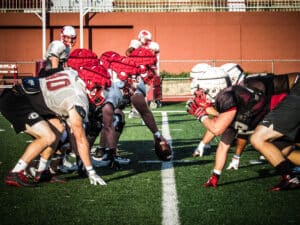
Quick Bubble screen
The quick bubble screen is a high-percentage pass play to get the ball to a receiver in the flat quickly. The quarterback receives the snap and immediately throws a short, lateral pass to a receiver near the sideline.
The receiver’s route is a quick out or a bubble screen, moving laterally toward the sideline before turning upfield. The offensive line creates a wall of blockers between the receiver and the defenders.
The quick bubble screen is effective against aggressive defenses, to exploit soft coverage or bring pressure as a change of pace.
The Oregon Ducks spread offense under coach Chip Kelly, and later Mark Helfrich often featured quick bubble screens as a staple play. They used their fast receivers to create mismatches against defenders and gain yards in chunks with swift, efficient passing plays.
Tunnel screen
The tunnel screen pass is a play that creates space for a receiver by using misdirection and blocking. The quarterback receives the snap, quickly throwing a short pass to a receiver who aligns behind or slightly to the side of the offensive line.
As the receiver catches the ball, blockers — linemen or other receivers — create a tunnel or alley for the receiver to run through.
In a game between the Philadelphia Eagles and New York Giants in 2017, the Eagles executed a tunnel wide receiver screen to Nelson Agholor, who caught the ball behind one side of the line of scrimmage and used blockers to weave through the defense for a significant gain.
Slip screen
The slip screen is a deceptive pass play designed to catch the defense off guard by appearing as a traditional screen play before the intended receiver releases downfield for a deeper route.
The play typically begins with the quarterback executing a play-action fake or quick drop back, mimicking a screen pass to a running back or receiver positioned near the line of scrimmage.
However, instead of the receiver staying behind the line to receive the pass, they slip behind the blocking linemen and release downfield on a vertical or intermediate route. The quarterback then delivers a quick pass to the receiver.
The slip screen play is designed to deceive the defense’s anticipation of a traditional screen play. It offers considerable potential to gain yardage.
During the Los Angeles Rams vs New Orleans Saints NFC Championship Game in 2019, Rams quarterback Jared Goff connected with wide receiver Brandin Cooks on a slip screen play, with Cooks slipping behind the offensive line and breaking free for a crucial first-down reception to advance to the Super Bowl.
Swing screen
The swing screen is a pass play to get the ball to a running back in the flat. It begins with the quarterback receiving the snap and quickly swinging the ball to the running back aligned in the backfield or motioned into the flat.
The offense sets up blocking for the running back, who catches the ball on the move. The running back then runs a swing route angled toward the sideline.
The swing screen is a high-percentage pass play for fast running backs with a quick release and a low turnover risk.
During the 2020 NFC Championship game, the San Francisco 49ers employed swing screens to running back Raheem Mostert, who exploited gaps in the middle of the Packers’ defense and picked up significant yardage to win the game.
Jailbreak screen
The jailbreak screen begins with the quarterback receiving the snap and quickly throwing a short lateral pass to a receiver near the sideline. At the same time, the offensive linemen release quickly to the perimeter to block defenders and create space for the receiver to break in with the ball.
The receiver’s route is to move laterally toward the sideline to catch the pass before turning upfield and following their blockers.
The jailbreak screen offers a quick screen pass that exploits soft coverage, uses athletic receivers and counters an aggressive pass rush or blitzes.
The Kansas City Chiefs, under coach Andy Reid, have incorporated jailbreak screens into their offensive playbook, using the speed and agility of their wide receivers to create explosive plays in the passing game.
Challenges and Solutions in Implementing Screen Plays
Implementing screen plays in football can involve several challenges, including timing and execution, exploring team strengths and weaknesses and smooth execution during games.
Tactical dilemmas
Tactical dilemmas in screen plays involve timing, execution and strategic decision-making. Coaches must ensure that players understand the timing and intricacies of screen plays to execute them effectively.
They must address when to call screen plays during games based on field position, down and distance and opponent tendencies.
Adapting to team strengths
Coaches should tailor plays to capitalize on the unique skills and abilities of the players. For example, if a team has fast and elusive receivers, coaches may focus on designing screens that allow these players to quickly get into open space and make plays after the catch.
Executing screen plays on the field
Executing screen plays requires precise timing, coordination and communication among players. Players must understand their roles and responsibilities within the screen play.
Repetitive drills during practice help reinforce fundamentals and develop muscle memory for effective screen passes on game day.
Adjusting screen plays based on opponents’ defensive strategies
Coaches must scout opponents to understand how they defend against screen plays. If opponents aggressively rush the quarterback or cover the perimeter, coaches opt for quick-hitting screens or misdirection to catch defenders off guard.
If opponents excel in recognizing and defending screen plays, coaches may incorporate double screens, pump fakes or screen-and-go routes.
Leveraging technology
Leveraging technology – like video analysis software or analytics tools – greatly enhances screen plays in football. Solutions like the GoRout coach-to-player communication system enable coaches to relay play calls and adjustments to players quickly and efficiently during practice to improve game execution.
GoRout Football Practice System
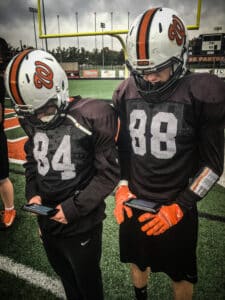
The GoRout football practice system is a cutting-edge sports technology that streamlines communication between coaches and players, transforming how football teams prepare and execute their strategies on the field during game day.
GoRout’s features for football practices
Let’s explain how you can use GoRout to boost your team’s results.
Simple scripting app
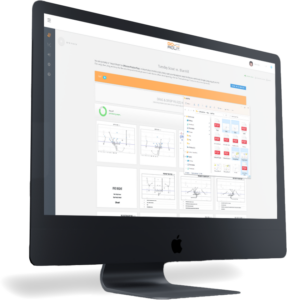
Our simplified scripting app improves organization with just a few clicks. Effortlessly add or edit scripts and cards, compatible with any card drawing software. Seamlessly copy or move plays between quarters for enhanced efficiency.
On-field practice app
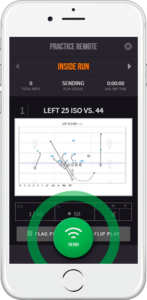
Experience seamless communication with players through our on-field practice app powered by GoRout STEEL technology. Instantly flip formations, and flag plays for review and edit cards in real-time using the intuitive finger drawing tool—all at your fingertips.
Rugged player devices
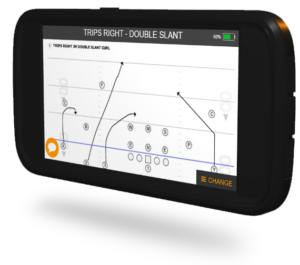
Equip your team with rugged wearable devices that withstand intense practice and adverse weather conditions. Send practice plays directly to players’ devices, triggering a vibration to alert team members of active play calls. Players receive visual play representations and optimized position-specific messaging for peak performance.
Get a quote now and increase your chances of winning!
GoRout’s Benefits for Football Practices
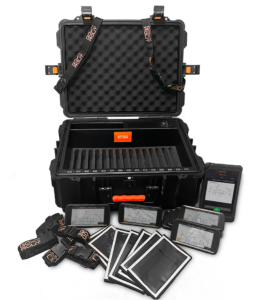
- Swift setup, Wi-Fi independent: Enjoy reliable communication with rapid configuration, eliminating Wi-Fi dependency for seamless operation.
- Lightning-fast delivery: Let players access play calls in real-time, with delivery speed as quick as 300 milliseconds for immediate on-field implementation.
- All-weather adaptability and durability: Use devices that withstand various environmental conditions effortlessly with visible display in direct sunlight and protection against hits, shocks, dust, water, humidity and extreme temperatures.
- Robust security: Ensure secure communication with encrypted channels through a four-way privacy screen for increased confidentiality.
- Customizable experience: Tailor packages to meet your specific needs, allowing for seamless scaling up or down as required.
- Seamless integrations: Benefit from robust integrations with leading platforms, hand-drawn cards and other apps, enhancing versatility and providing coaches with a comprehensive toolset.
Get a quote now and discover how GoRout can take your coaching to the next level. Don’t miss out on the future of football training!
Testimonials from football coaches

Check out these GoRout testimonials from coaches like you!
“GoRout has increased our practice speed noticeably. With a simple system, we can quickly and consistently get our scouts the plays without needing a huddle, making practice more efficient and effective. Not only that, the GoRout customer service is unmatched.”
– Drake University
“The simplicity of the GoRout system has made it a must-have. Our staff and players have embraced it completely and the efficiency of our practices has led to our success on game day.”
– Liberty University
“With this system, we were able to rep our plays exponentially. The more reps the better, and this system helps you accomplish that goal!”
– Millbrook High School
Experience GoRout football practice and see how it works firsthand.
Free Football Playbook Template for Coaches
A well-organized playbook is essential for effective communication, consistency and player development in football. It gives teams a strategic advantage, allowing them to adapt to different opponents and game situations.
That’s why our team of experts has created a template to help you improve as a play caller and enhance your team performance.
The football playbook template includes a blank play sheet where coaches can draw plays. It has a variety of simple run and pass plays and defensive alignments for coaches to put into their playbooks or use for inspiration for designing other plays.
Download the GoRout football playbook template now.
Tips for Implementing Football Screen Plays in Practices
After covering the essentials of football screen plays, here are three key tips to help you implement them into your practices.
Structure practice sessions to focus on screen plays
Coaches should dedicate time during practice sessions to work on the execution of screen plays, emphasizing proper timing, routes and blocking assignments.
Use video analysis for improvement
Using video analysis allows players to review their performance and identify areas for improvement, helping them understand their roles better within the screen play.
Incorporate screen plays into game simulations
Incorporating screen plays and into game simulations during practice helps players know how these plays unfold in real time for quicker decisions during games.
Conclusion on Football Screen Plays
Screen passes create opportunities to mislead a defender, so your team has more opportunities to gain yardage and score touchdowns. Coaches can experiment with football screen plays to strengthen their game against aggressive defenses and gain an advantage on the field.
The GoRout football practice system helps coaches and players improve their performance on the field. It uses wearable technology and a digital platform to facilitate more efficient and effective practice sessions.
With GoRout, coaches can create and run plays in real-time, giving players immediate feedback and allowing them to adjust. It helps players develop their skills and improve their understanding of the game.
Overall, the GoRout football practice system is a valuable tool for teams looking to take their performance to the next level.





